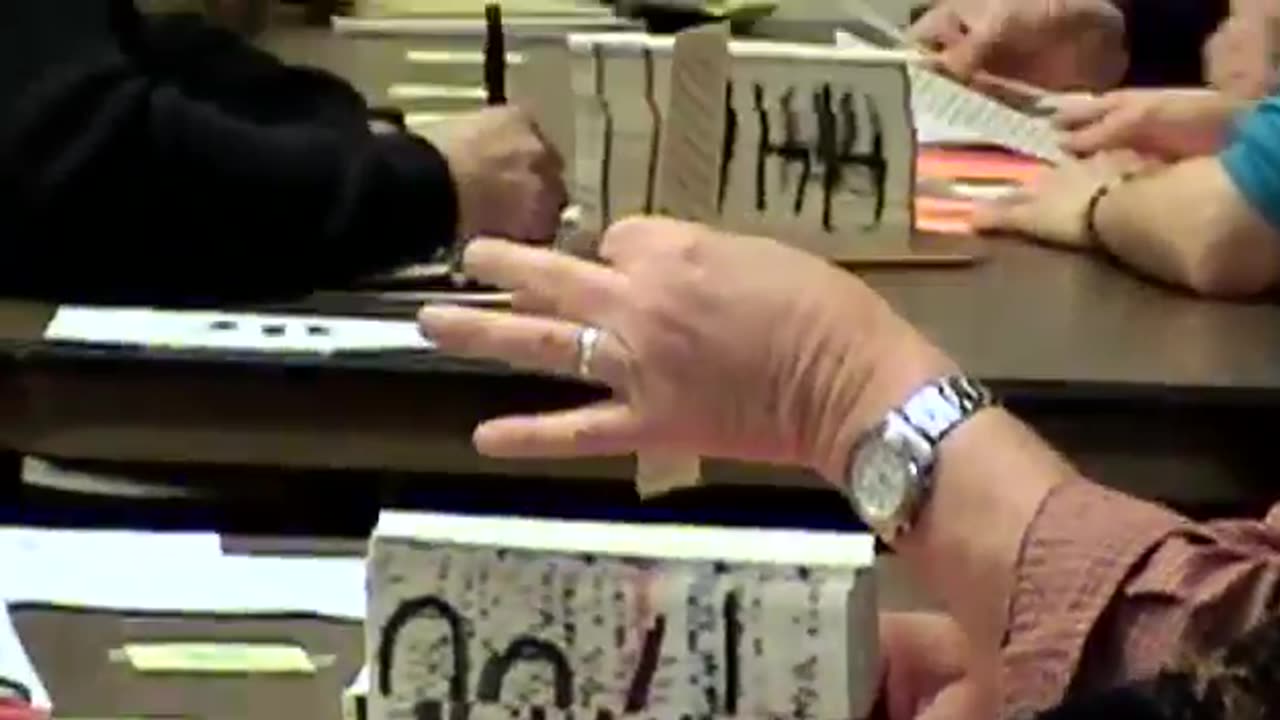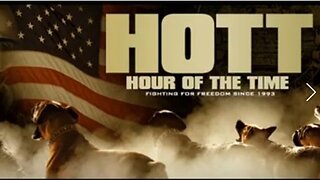Premium Only Content

Hacking Democracy
Hacking Democracy is a 2006 documentary investigating the vulnerabilities in U.S. electronic voting systems. It follows the journey of activist Bev Harris and her organization, Black Box Voting, as they uncover potential flaws in voting technology, particularly with electronic machines manufactured by companies like Diebold (now Premier Election Solutions). The film sheds light on how these machines can be manipulated and presents evidence suggesting that vote counts can be altered without detection.
A notable sequence in the documentary involves a demonstration in Leon County, Florida, where a computer scientist successfully hacks an electronic voting machine, altering the results without any indication of tampering. The documentary raises questions about accountability and transparency in election technology, showing interviews with programmers, election officials, and whistleblowers who express concerns over the integrity of digital voting.
Hacking Democracy doesn’t make definitive claims but aims to expose risks and advocate for election security reforms. It’s regarded as a critical call to scrutinize electronic voting infrastructure, especially given that the documentary leaves viewers questioning the reliability and security of the digital systems intended to ensure fair democratic processes.
Here is a deeper look at Hacking Democracy, breaking down the core claims and segments of the 2006 HBO documentary:
1. Election Software Manipulation
Hacking Democracy opens by spotlighting how proprietary election software lacks transparency and is owned by private companies such as Diebold, whose systems were widely used at the time. The film highlights a claim made by activists and programmers that this lack of transparency could enable manipulation of vote counts without public oversight. One of the documentary’s main assertions is that the source code of electronic voting machines isn’t open for public review, leading to vulnerabilities that the public and even government officials can’t independently verify.
2. 'Black Box' Voting and Bev Harris’s Investigation
Activist Bev Harris, founder of Black Box Voting, is the central figure throughout the film. Her investigation into voting machines begins when she finds a file of Diebold’s voting machine software on an open, unprotected FTP server. Harris and her team dig deeper, discovering what they claim are potential security flaws, questionable programming, and code that could, in theory, be manipulated to produce fraudulent election outcomes. This discovery raises questions about whether companies like Diebold adequately secured their software to prevent unauthorized access.
3. Leon County, Florida Hacking Demonstration
One of the film’s pivotal scenes takes place in Leon County, Florida, where computer scientist Harri Hursti performs a hacking demonstration with the cooperation of the county’s elections supervisor, Ion Sancho. Hursti successfully alters vote counts on an AccuVote machine—a widely used optical-scan system. This hacking method, now known as the “Hursti Hack,” reveals that vote totals could be modified without leaving an obvious trace, as long as someone has access to the machine’s memory card. The demonstration underscores the claim that electronic voting machines, under certain conditions, are susceptible to unauthorized manipulation without triggering security alarms.
4. Claims of Tabulation Vulnerabilities
The documentary also emphasizes the importance of the central tabulation systems—computers that aggregate results from voting machines across precincts. Harris and her team argue that central tabulators could be modified to manipulate overall vote counts. Using a mock setup, they demonstrate how a central tabulator’s database can be accessed with simple Microsoft Access software, making it vulnerable to exploitation by anyone with basic software knowledge and access to the network.
5. Public and Government Reactions
Hacking Democracy captures reactions from local election officials, computer scientists, and concerned citizens. It shows the skepticism of some officials about the seriousness of the vulnerabilities, as well as the gradual acknowledgment from others. Some officials admit that they did not have the necessary technical knowledge to assess these issues, while the activists argue that oversight of electronic voting should not require specialized expertise but should be accessible to the general public.
6. Potential Consequences for Democracy
The documentary wraps up by arguing that insecure electronic voting machines threaten the integrity of elections, potentially undermining democracy itself. Although the film does not allege any specific cases of election manipulation, it insists that the demonstrated vulnerabilities are a call to action for lawmakers and citizens alike. Harris and her team advocate for paper ballots, routine audits, and stricter transparency in election technology to safeguard against the potential for fraud.
Ultimately, Hacking Democracy frames the issues within a broader discussion on whether electronic voting companies should be more accountable to the public. While it raises numerous concerns about the existing system, the documentary doesn’t claim outright that any election was manipulated; instead, it warns that without reform, the U.S. electoral system could remain susceptible to undetected tampering.
-
 12:17:16
12:17:16
Deus Meum Que Jus
7 days agoWilliam Cooper - HOTT - Asset Protection Series 8.99
6231 -
 3:25:55
3:25:55
DillyDillerson
4 hours agoCAN'T SLEEP | Solo Raids | Trying to level up my workshop | Tips and help are welcome!
12.2K1 -
 LIVE
LIVE
DynastyXL
4 hours ago🔴 LIVE NOW – ARC RAIDING - BADLY! - NEW RUMBLE WALLET - THOUGHTS?
83 watching -
 2:20:13
2:20:13
Side Scrollers Podcast
22 hours agoVoice Actor VIRTUE SIGNAL at Award Show + Craig’s HORRIBLE Take + More | Side Scrollers
77.2K21 -
 2:11:03
2:11:03
EXPBLESS
2 hours agoShowcasing New Game | (Where Winds Meet) #RumblePremium
5.68K -
 LIVE
LIVE
Boxin
3 hours agolets BEAT! Kingdom Hearts!
39 watching -
 18:49
18:49
GritsGG
18 hours agoI Was Given a Warzone Sniper Challenge! Here is What Happened!
24.4K2 -
 19:02
19:02
The Pascal Show
1 day ago $8.29 earnedNOT SURPRISED! Pam Bondi Is Lying To Us Again About Releasing The Epstein Files
31.2K23 -
 6:05
6:05
Blabbering Collector
22 hours agoRowling On Set, Bill Nighy To Join Cast, HBO Head Comments On Season 2 Of Harry Potter HBO!
27.1K4 -
 57:44
57:44
TruthStream with Joe and Scott
2 days agoShe's of Love podcast & Joe:A co-Hosted interview, Mother and Daughter (300,000+Facebook page) Travel, Home School, Staying Grounded, Recreating oneself, SolarPunk #514
44.9K1